Equus takes wing as luxury-level Hyundai
PALO ALTO, Calif. —The North American introduction of the 2011 Hyundai Equus was well orchestrated, but in a way, I felt like I had cheated. I had gotten a brief, and swift, early sample of the Equus, which was definitely more impressive than anything we could do on the twisting mountain roads near Palo Alto.
A couple of months before the late-August introduction of the Equus in North America, I had the opportunity to visit Korea, ostensibly to try the new Sonata Hybrid and Sonata 2.0 Turbo models at Hyundai’s research and development track. It is a huge layout, with various handling courses, and room for a slalom, acceleration and braking tests, all encircled by a 4-kilometer high-speed oval track. The highest lane on the oval is banked at 43 degrees — steeper than Talladega, if you’re a NASCAR fan.
The plan was to venture onto the high-speed track to try the Sonata with its soon-to-come 2.0-liter turbo engine, so my co-driver and I hustled over to a 2.0 Turbo parked on an escape road halfway down the straightaway on the oval. But a couple of other journalists beat us to the Sonata. There was another car parked there — a long, luxurious sedan, sitting in stately elegance. “Can we take that one out?” I asked the Korean fellow monitoring the one-lap runs of the 2.0 Turbo Sonata.
“Sure,” he said, with a shrug.
I had been thinking that Hyundai might surprise us with a first-look view of the Equus on that trip, but I hadn’t expected to be able to drive it. Especially on a high-speed oval that I didn’t know existed. I jumped at the chance and climbed behind the wheel. We were waved onto the track. Being halfway down the straight and knowing we would only get one lap, I stepped hard on the gas.
New engines, refinement spark 2011 Mustang
My rule of thumb regarding new vehicle introductions is that the hyperbole seems to be inversely proportional to the substance. But while some automakers have compromised reality with hype, Ford might be guilty of understatement with the introduction of the 2011 Mustang.
If you don’t think it looks different, drive one through city traffic and see how many people in other cars, or on foot, shout out and give you a thumbs-up. And if you don’t think it performs differently, then you fail to comprehend the significance of an entirely new and high-tech, all-aluminum, 5.0-liter V8 that tops 400 horsepower and is more “boss” than those fondly remembered Boss 302 engines of 1970. Or, a novel application of the 3.7-liter version of Ford’s high-tech V6 that tops 300 horsepower. Both engines perform admirably for go-power as well as go-past-the-gas-station efficiency.
Summoning the nation’s automotive media to Los Angeles, Ford introduced the new car by officially calling it the “2011 Mustang Refresh.” During a car’s four or five year lifespan, it might get refreshed with a mid-term styling tweak, and in the Mustang’s case, that was done for the 2010 model year. The new 2011 version stayed on the same platform, with the same basic silhouette, and the innovative interior features, so some journalists overlooked the obvious question why Ford would bring a herd of journalists to California for a change of grille and tail fascias. Some published syndicated reports I’ve read expressed positive vibes, but said since the Mustang was revised and refined for 2010, the 2011 is only a modest alteration.
Modest? Ford may have to go back to Hyperbole School.
Chief engineer Dave Pericak simplified the preliminary information by issuing the motto the engineering team accepted as its challenge: “Improve everything, and compromise nothing.”
Car-makers who have done much less to a car could have turned that into a 20-minute monologue.
Ford revolutionized the U.S. auto industry when it brought out the first Mustang, back in 1965, leading a charge that brough us the Chevrolet Camaro, Dodge Challenger, Plymouth Barracuda, Pontiac Firebird, and American Motors the Javelin, as everybody sought a piece of the highly popular “ponycar” segment. Younger journalists, who might not remember all that, have actually written that the term ponycar came from the name Mustang, assuming a horse-to-horse connection, when actually the term covered that whole array of long-hood/short-rear deck, front-engine/rear-drive sporty coupes, because they were smaller than the big horses — larger sedans and sedan-based coupes.
Midsize cars and the demise of the early 1970s hot cars carved into the segment’s chunk, and one by one, all of them disappeared — all but the Mustang, which tried to change with the times. The times saw a Japanese takeover of the sporty coupe market, with Honda leading the way with the Accord’s coupe version, and the expansion of cars such as the Mazda MX-6 version of the 626. So the Mustang got smaller, but it also under-achieved with less-performance, then it grew again, and took on a newer V8 engine. Finally the Mustang came back out resembling its original self, and the resurgence was so successful that Dodge brought out a new Challenger, and Chevrolet followed with the much-promised and long-awaited return of the Camaro.
Ford stayed on its game, refining the Mustang and adding the latest two or three Shelby models to revive memories of Cobras past. The Challenger and the Camaro are stunning to look at, but they share one problem — both are surprisingly heavy. The Challenger body was placed on the Charger’s sedan platform, and stuffing a Hemi V8 in it helped performance. The Camaro is also very heavy, so Chevy complements a strong 3.6-liter V6 with the 6.2-liter Corvette V8. So it moves, and quite well at that.
With an eye toward those two reborn competitors, Ford redid the Mustang’s 2010 refinement to make it lighter and more agile. An adequately powered sporty coupe with its overhead-cam 4.6-liter V8, the Mustang kept clinging to its all-around driveability edge. Still, Chevy both the Camaro and Challenger are attracting attention with lots of power from those large, if aging, pushrod engines.
That prompted Ford to add to its recent surge in technical advancements while upgrading the Mustang again for 2011, installing either its high-tech V6 or an all-new 5.0-liter V8.
First, Ford did away with the aged 4.0-liter V6, an engine that began life powering Ford’s European cars, with a German heritage that gained overhead cams and enough improvements over the years to almost stay contemporary. In the meantime, Ford had built a jewel of a high-tech 3.5-liter V6 three years ago — with a 3.7-liter version as well. Those provide the drivetrains of choice for almost everything in Ford’s stable using transverse-mount, front-wheel-drive architecture.
For the Mustang, Ford engineers switched the 3.7 to longitudinal placement, connected it to a driveshaft, and ran its power through to that solid axle rear.
If you didn’t know there was a V8 available, the 3.7 V6 would be more than enough, even if you are a V8 fancier. Its 305 horsepower puts it in the class of one that can boast of more than 300 horses and an EPA estimate of over 30 miles per gallon, at 31 highway. It also has 280 foot-pounds of torque, giving the Mustang plenty of punch off the line, or as the revs rise to its impressive 7,000-RPM redline.
Select the 3.7 with either the 6-speed manual transmission or the 6-speed automatic, and it comes with dual exhausts, which sound satisfyingly potent.
One event at the introduction was for us to drive various Mustangs out to a large parking lot location where a series of cones outlined a nice, twisty autocross. Stabbing the gas pedal for short straightaway bursts, I was impressed enough with the response to ask a Ford engineer, “Are these V8s?” They were not. All the autocross Mustangs were V6-powered, with a V6 that equals the power that the SVT Mustang V8 churned out in 1999.
Maybe the Mustang doesn’t “need” a V8, but there is what we want vs. what we need. The new 5.0 V8 is definitely something special, from its forged steel crankshaft, to its high-revving potency, and to the wonderful exhaust warble.
This time we stopped at a small regional airport, where Ford had contracted to set up a small dragstrip — an eighth-mile straightaway on one of the runways. We were driving GT models, armed with the new V8. Because of an uneven number of journalists, I had the benefit of being accompanied by Tom Barnes, a Ford engineer. Not only was it a benefit because Barnes was a great source of information, but he’d driven the car enough so instead of the usual driver changes along the route, I got to drive it all, both days.
For those still running on the fumes of 1970, it might seem foolish for Ford to look at the Hemi and the 6.2 Corvette engine in its competitors and build its new V8 to only 5.0-liter displacement. But the old American-car theory that “there’s no substitute for cubic inches” has been blown away by the contemporary answer: “Yes there is — it’s called technology.”
Surprisingly, the Mustang has stayed with a solid rear axle, compared to the sophisticated independent rear axles of virtually all other cars. But if the bottom line is how the car handles, the Mustang’s exploits on the autocross course, as well as while sailing through the curving California foothills, up mountains and down through valleys, is pretty convincing. Besides, the weight-saving fits Mustang’s concept of staying light and agile. That’s another reason why 5-liters is more than enough. With the dual overhead cams twirling, the new V8 cranks out 412 horsepower and 390 foot-pounds of torque.
As everybody lined up to take their turns and get acquainted with the standard drag-racing “Christmas tree” starting lights, I took a warm-up run in a Mustang. All of the Mustangs were equipped with the 6-speed automatics, and you could click the traction-control on or off, depending on whether you wanted to screech the street-radial tires or glue the car to the track for maximum traction.
A couple of flashy Camaros were parked in the left lane, with their Corevette engines and all. I tried one, and cranked off a 9.235-second run, hitting 80.81 miles per hour. It felt very fast, and I was impressed. Then I tried a sequence of different Mustangs, with different rear-axle ratios. My three tries ranged from 8.695 seconds at 85.73 mph, to my personal best of 8.573 seconds at 86.17 mph. It’s not as though the Mustang felt that much swifter, but running over six-tenths of a second quicker, and over 5 mph faster is an enormous difference in a standing-start one-eighth-mile burst. Especially when the swifter time and higher speed were both recorded by 5.0 liters against 6.2 liters.
It was fun, and entertaining, as well as informational. What Ford didn’t bother explaining is that with the dual overhead cams and their higher-revving capability, the Mustang was just starting to reach into the range of its performance sweet spot.
As for sticker price, the V6-powered Mustang has a base price of $23,000, and the V8-loaded GT model starts at $30,000. Those are bargain prices for so much performance technology, because the “modest” upgrades of the 2011 Mustang engines measure almost 100 horsepower more for both V6 and V8 versions, as well as 7-miles-per-gallon fuel economy improvements.
Ford also has hit the mark with packages. The GT gets 19-inch wheels, with either a “billet” grille, or the foglight package, which insets large lights inside the grille. You also get a pedestal spoiler on the rear, and Brembo brakes, as well as upgraded and firmer suspension. The V6 models come in an impressive basic style, or with a Mustang Club of America package, with 18-inch wheels over the standard 17s. The V6 can be bolstered by the stiffer-handling Performance package, adding many of the GT items, including special 19-inch alloy wheels.
If I have a complaint on the slick-steering, high-powered Mustang it’s that Ford has borrowed a page from Chevrolet’s book of tricks by adding the hated skip-shift device. Under the guise of summoning misleading fuel economy numbers for EPA estimates, the device causes the 6-speed shifter to go directly from first to fourth during moderate acceleration. If you go really slow, or hit the gas really hard, it will shift directly from first to second. Previously a nuisance only on the Corvette, and other Corvette-powered vehicles in GM’s line, this device is now a reward for buying the stick-shifting Mustang GT.
Maybe I’m in the distinct minority, but I’m a second-gear lover. I don’t want to do standing-start burnouts; I tend to start up moderately in first, then hit second and hammer it a bit. Nothing illegal, mind you, but running up the revs in second is all the kicks I need. When I do my thing on the Mustang GT, I pull the shifter back and hammer the gas…and the thing falls on its face, because I’m in fourth. By the time I’ve wrestled the shifter back up and around and down into second, I’m seething at having lost the thrill of a smooth-shifting upshift into the wide power band.
It’s reason enough to buy the 2011 Mustang with the automatic, which is also a 6-speed, except for one thing: Ford neglected to include steering wheel paddles to allow a driver to manually override the automatic. It’s as if Ford made a boardroom decision to make the new Mustangs really neat looking, and really fun to drive, but cheated everyone out of the fun of shifting.
If the transmissions have the only things I consider less than ideal, the handling certainly is up to the best high-performance standards. The entire platform is reinforced by a large cross-member that aids stability, and the car responds precisely, and steering is razor-sharp. Electric power steering avoids the usual pitfall of numbness, and instead feels well-weighted, while the car gains the asset of not having the weight of a power-steering pump.
The 2011 Mustang also has the optional SYNC system Ford has worked out with Microsoft, allowing occupants to command their personal listening devices around with voice commands. A neat feature that might be seen as a gimmick by many is the ability to alter the instrument lighting and the ambient lighting by changing color at the touch of a button. Do you like red, blue, green, purple, orange, or what? Hit the switch and change it — by the hour, if you so choose.
Cynics who are looking for nitpicks might point out that the rear seat is useful for very small children at best. I don’t see it as a problem. If nobody is riding back there, you just have fewer witnesses to compromise the light weight of the package. Or to hear you grumbling about the blasted skip-shift.
Ultra-connectivity gives 2011 Edge to Ford
Anyone who has ridden in a new vehicle in recent years can appreciate all the creative technology in navigation systems, and the ability to link to cell phones, and miniaturized musical devices. But with the new 2011 Ford Edge the emphasis goes beyond the numerous styling and driveability changes. Think of the 2011 Ford Edge as the most futuristic multiple-connectivity device on the planet, and it just happens to come packaged inside a new and progressive crossover SUV.
The Ford Edge has sold well in its first generation as a stylish crossover, and it would be easy to characterize the 2011 Edge by its impressive restyling inside and out. Easy, but far from adequate. The new Edge has edgier styling, so to speak, and a revised interior, with upgraded power and great attention to vault-like silence for its occupants. But the Edge is also the new vanguard for Ford’s determined effort to make its cars the highest of high-tech connectivity for a new generation of buyers.
The “old” generation of buyers might simply want a vehicle that will provide solid and efficient transportation, and they might have scoffed when Ford hooked up with Microsoft to create some useful and flashy ways for its “SYNC” system to work with the latest electronic gizmos. But it’s time for the old generation to realize the new generation is fast becoming the standard for generations to come. And the new Edge is the perfect example of what we can see in increasing doses of new vehicles.
Every manufacturer wants to attract the new and younger customers, and all have made moves to add various jacks and input features to allow people to hook up their cell phones or iPod of MP3 music devices. SYNC put Ford into the forefront, but it couldn’t have foreseen the breakthrough technology that can be obtained in the new Edge.
The introduction of the new Edge was interesting. Frank Davis was host of the presentation and talked about how Ford will have the most new introductions in 2011 that he has ever witnessed. “The Edge has bold styling, powerful and efficient engines, improved driving dynamics, and revolutionary technology,” Davis said. “Along with class-leading power and fuel economy, and ride, handling and steering improvements, there are 17 new features on the new Edge, and 11 of them are class exclusive.”
The interior features a flat panel for a center stack, copied from the great design of Volvo, which Ford owned until a year ago. It also offers Ford’s high-tech 3.5-liter V6, and an upgraded 305-horsepower 3.7, featured in a new Sport model with paddle shifters on the 6-speed automatic, and such important improvements as trailer sway control. Those features will be bolstered when Ford also introduces its EcoBoost turbocharged 4-cylinder with 285 horsepower and fuel economy beyond the estimated 25 mpg of the V6.
One of the features Ford is pushing is partnership technology. Just as it did with Microsoft on SYNC, Ford now is partnering with Sony to advance its instrumentation, audio and connectivity, and it is linking up with Sirius satellite radio to create an instant replay of broadasts for later playback, plus high-definition radio that can be downloaded back to a portable audio MP3 system. A final partner is TeleNav, which upgrades the navigation system for improved turn-by-turn, point-of-interest, economic routing, and altering the nav screen to a 3-dimension-like view that shows landmarks.
Davis turned the presentation over to Elaine Bannon, the chief engineer of Ford’s crossovers, and she desrcribed the Edge Sport’s 22-inch forged aluminum wheels and stand-alone styling accents, and pointed out such important things as having the best second-row legroom, reclining rear seats, and a fold-down capability for hauling things up to 8 feet in length.
Those are all important assets for the new Edge, but the star of the whole show was — by far — still to come with the MyFordTouch, audio and nav coordination. John Schneider, chief engineer of multimedia — a title that didn’t exist a couple of years ago — showed off the Sony-design instrument panel. Honda has worked with Sony in recent designs too, and if Davis was startled that I suggested the new Edge intrument cluster is remindful of Honda’s, he shouldn’t have, because I meant it as high praise. Honda ergonomics are world-class, and this brings Ford right up there too.
Ford’s intention is not to simply load up its vehicles with gadgets; these futuristic gadgets are designed to allow drivers to keep their hands on the steering wheel and their eye — and presumably their attention — on the road and the driving responsibility at hand. As Schneider explained, the new generation wants to be continuously connected, so Ford is striving to find safe ways to connect and operate all devices, with touch and voice controls.
There is a large central knob on the center stack that can change modes of what you want to control. There are two USB jacks, a slot for an SD card, and RCA jacks. With many high-tech cars, a driver might actdivate 100 first-level commands; with the MyTouch in the new Ford Edge, that number goes to over 10,000.
Among examples of what the Edge can do:
- The driver says, “Call home,” and the system makes the phone call via Bluetooth, allowing talking and listening without moving either hand off the wheel.
- The driver says, navigation, then asks for an address, like “123 Central Avenue,” and the nav system immediately guides you, by the dash screen and by voice commands, to that address.
- The driver says, “Increase fan speed,” or, “increase temperature to 70,” and the system alters the climate control.
- Having already programmed your favorite songs into the system, or having plugged your iPod or other device into the SYNC system, the driver says, “Play song ‘Beg, Steal or Borrow,’ ” and the system goes to that newly released song by Ray LaMontagne, which you installed the day before. It’ll do the same with an old Everly Brothers or Waylon Jennings song, by voice command. If the song hasn’t been downloaded, it will treat your hooked-up iPod as though it was part of the system.
- A phone call comes in, and you can answer it, again by voice command, while keeping your hands on the wheel and your eyes on the road. If you get a text message to your cell phone, the system will read it aloud. Don’t ask me how! Beyond that, if the time comes when you want to disconnect your connectivity, you can click onto a “Do not disturb” mode, which then will transfer all calls to your call-waiting, or transfer text messages to your cell phone.
The SYNC services now include traffic, turn-by-turn, MapQuet, Google, sports scores, weather, news, movie listings, and stock quotes, which you can order “Send to SYNC.” If you’re listening to Sirius satellite radio, and a neat new song comes on, you can record it by a “tag” feature that records the song to your music device, or for up to 34 minutes of recorded broadcasting for later playback.
The Sony audio system is a 390-watt unit with 12 speakers surrounding you in the Edge, and it has a Class D fully digital amplifier, with digital processing, Dolby, and HD radio.
But here’s my favorite feature. If you get the proper plug-in data modem, you can plug it into the Edge and the vehicle becomes your own, private Wi-Fi hot spot, and up to five different computers or devices can hook up to it.
When we took the Edge out for a drive on its introduction tour, the intricate route that usually requires a guide-book had all been programmed into the slick new nav system. If we pulled into a rest stop or some other shop, the SYNC voice would ask if we wanted to reprogram the route. If we said yes, it would completely redo the guidance based on where we were heading, off the previous route, so we had to say “No,” in which case once we got back on the route the system picked up its pre-programmed route.
I had the pleasure of having Frank Davis ride with me, and we had some great conversations. He seemed to enjoy my heckles, and I appreciated his candid responses. For example, the audio system has a large knob prominently located. You push it to turn it on, and you turn the knob to get more volume. “What a concept!” I said. He laughed at the irony that even with the most imaginative electronic devices ever put into a vehicle, you could still go back to the good ol’ days of manually turning a knob to increase the volume.
The Edge drove well, handled superbly, and, with the thicker acoustic glass and all sorts of sound-insulation, was amazingly quiet. My only complaint was that the rubbery feel of the turn signal stalk always returned to its neutral setting, even when you put the turn signal on. Repeatedly, I found myself noticing its angle and assumed it hadn’t engaged, so I’d switch it again — which turned the signal off. That meant I made a dozen turns with my turn signal briefly turned on, and then emphatically turned off. Not good.
Davis suggested you could hear the turn signal clicking to indicate it’s on. But not, I told him, if you happened to be enjoying the fantastic Sony audio system. Maybe you could get used to the feel, but it is a cause of concern.
That, however, should be an elementary fix on the most futuristic vehicle on the planet.
Kenyans claim 9 of top 10 at Grandma’s
The question “Which Kenyan will win this year?” was far more than just cynical rhetoric in 2010, at the 34th running of Grandma’s Marathon, which had its familiar upbeat theme tinged with sadness in the aftermath. Kenya’s involvement was only joyful, with Philemon Kemboi leading a contingent that finished 1-5 and had nine of the top 10.
Kemboi’s surprising late bid left Chris Kipyego and David Rutoh behind over the final mile, and his third-to-first burst broke the Canal Park tape at 2 hours, 15 minutes, 44 seconds. It was Kemboi’s first marathon victory ever, although it was Kenya’s 10th in the last 14 Grandma’s Marathons.
The race will, unfortunately, be remembered for having sustained the first fatality in the Marathon’s 34-year history. Norman Ruth, 64, from Duluth’s suburb of Hermantown, finished the 20th Annual Garry Bjorklund Half Marathon, which started earlier in the day, but after finishing he required medical attention, and died of an apparent heart attack. He was attended at the medical tent near the finish line and then hospitalized, but didn’t recover.
While Duluth’s premier sports event is annually well-promoted and attains numerous pages of publicity, organizers were obviously unprepared to deal with the tragedy. Later on race day, only the fact that someone had died in the half-marathon was disclosed.
Meanwhile, out on the course along Lake Superior’s North Shore, the full marathon was being taken over by the three top runners, all making their first visits to Duluth. They led the swift crop of runners who make their annual pilgrimage to Duluth and return home by bolstering their East African nation’s economy.
“It was the biggest race I’ve ever won,” said Kemboi, who earned $10,900. “I will go home…and I will go to the bank. I feel good about being able to help my family’s life to improve.”
Kenya’s elite runners had won nine of 13 before Minnesota native Christopher Raabe won last year. Raabe ran among the leaders this year, too, and finished sixth as the only interruption to Kenya’s top nine places.
Things were much simpler to follow in the women’s segment, where Buzunesh Deba from Ethiopia, simply sped away from the start, and recorded a personal best 2:31:36 time to beat runner-up and fellow-Ethiopian Yeshimebet Bifa by almost four full minutes.
Deba moved from Ethiopia to New York four years ago, and said watching the New York Marathon in 2008 caused her to decide to become a distance runner. After competing in shorter 5K and 10K races, she started in marathons only last fall.
“The first marathon I entered I won,” she said. Her winning time in the California International Marathon was 2:32:17, and after running seventh in the New York Marathon, she sped into 2010 by winning the National Marathon to Fight Breast Cancer in Florida with a time of 2:33:08. So Saturday’s run was her best by almost a minute.
“My plan was to start fast and try to get ahead,” she said, laughing herself at such obvious strategy, except that she made work. She was alone by the 5-mile mark, and nobody else ever got within view of her.
Mary Akor, who had won the last three Grandma’s, finished fourth, behind the top two Ethiopians, and Everlyne Lagat. Akor, 33, has suffered with recent illness that is scheduled for surgery in the near future, and she had to yield to the youthful Deba, who is 22, and Bifa, 21.
The 20th annual Garry Bjorklund Half Marathon was also owned by African runners. Stephen Muange of Kenya won a close men’s segment in 1:04:24, three seconds ahead of Bado Worku, an Ethiopian who was closely followed by countrymen Derese Deniboba Rashaw and Worku Beyl. The women’s category was won by Caroline Rotich, in 1:12:40, nearly two minutes ahead of Alemtsehay Misganaw in a 1-2 Ethiopian finish.
The festive attitude of marathon day was as high-spirited as usual, because nobody had been informed that, hours earlier, Ruth had become the first fatality in the Marathon’s 34-year history. Dr. Ben Nelson, serving his first race as medical director, made the early evening announcement of the fatality, but said he met with race officials and they decided to release no other information.
The fatality was a shocking irony on a race day with temperatures in the mid-60s, about 20 degrees cooler than the year before, which greatly reduced the number of runners affected by the heat and high humidity. Dr. Nelson said in the full and half marathons, 230 runners required some medical attention, but only four from the finish-line tent and three others from out on the course were sent to hospitals for treatment — a significant reduction from recent years.
Withholding news of the tragedy, intentionally or not, left the day to the usual celebration, and the drama for the full marathon built throughout. Race-watchers along the North Shore saw the Kenyans dominate from start to finish, with the three front-running Kenyans pulling away around the 23-mile mark. By the time they glided off London Road and onto Superior Street, the three lead runners were alone. But even then, there was a surprise finish.
Kemboi, 36, whose best previous marathon time of 2:10:58 was good for only a fifth-place finish in France last year, was loping along right behind the tandem of Kipyego, 36, and Rutch, 24, who said they were anticipating which of the two would make the pivotal move for the lead. Kemboi burst past them both as they turned off Superior Street, and his more experienced rivals couldn’t match his finishing speed.
Kemboi is taller than most other Kenyan runners, at 5-foot-8 and 120 pounds, and when he stretched his legs out running down Fifth Avenue West, his winning time of 2:15:44 beat Kipyego by 16 seconds, with Rutoh three more seconds back in third. Kenyans Kipyegon Kirui and Kennedy Kemei were fourth and fifth. Sixth was Raabe, the Minnesota native who was a surprise winner last year. Raabe, who now lives in Washington, D.C., was followed by four more Kenyans, as the prolific elite visitors were the class of the 5,620 entries who finished the full marathon.
Despite the cooler conditions, the full marathon didn’t threaten any records. Kemboi’s winning time was far off the record established by Minnesotan Dick Beardsley in 1982, at 2:09:37 in the fifth year of the event. In fact, Kemboi’s 2:15:44 was a half-minute off last year’s winning pace, when Raabe won at 2:15:13. But the victory was a breakthrough for Kemboi.
A late starter in competitive running, Kemboi had grown up on a family farm near Kapsabet, about seven hours drive from Nairobi. His family never had a car, he said, and when he realized he could help his family by earning money in distance running, he started seriously training in 2004. Calf injuries hindered him for a couple of years, so he had only entered three previous marathons.
Inexperienced or not, he said, “I thought I could win it.” His top rivals were less convinced. Kemboi, speaking only his native Swahili via an interpreter, said he went along with Kipyego and Rutoh, his two countrymen, when they moved away from the pack. “It wasn’t a bad pace,” Kemboi said. “But when they decided to push forward, I was in agreement that we needed to pick up the pace.”
He said he thought he surprised them when he went for the lead as the three turned off Superior Street, down the Fifth Avenue West hill toward the harbor. Kipyego had run against Rutoh before, but didn’t know Kemboi. After the three leaders got away from the field, Kipyego was running alongside Rutoh and said, “I told this guy, ‘Let’s push, let’s push.’ I told him it was time to break away. I was expecting him, if anyone, to be the one to go for the lead.
“I didn’t know who this other guy was. When he went by us, I tried hard to close the gap, but he was very strong for me. I started thinking, ‘Is HE going to win the race?’ ”
He was, indeed.
Kipyego said Grandma’s is unlike other major marathons, which he suspects limit the number of Kenya runners invited. There were 27 at Grandma’s.
“I saw the list, with so many Kenyans, and I thought, ‘This will be fun,’ ” said Kipyego, He said his sister, Sally, became a top NCAA runner at Texas Tech after growing up running to keep up with her big brother. In Kenya, running ability is naturally attained by a different lifestyle from childhood. In the U.S., kids might be driven six blocks to a playground, a fact Kipyego found amusing.
“We had no cars, no buses, and there were no roads,” said Kipyego, who is from the city of Eldoret. “School was five kilometers away, and there was no school bus. We’d run to school in the morning, run home for lunch, then run back to school, and then run home, every day.”
That is a common thread among the Kenyan runners. Kemboi said he, too, ran from the family farm to school, but it was only one kilometer. Hardly proper training for an elite marathon runner. But even if 36 makes him a late-bloomer, his victory can be a springboard to more marathon invitations.
Perennial star Mullen leads perennial power Hawks

Pressure? What pressure? If there is anything resembling pressure on Hermantown’s return to Caswell Park in North Mankato this week to defend its Class AA Minnesota state high school softball championship, it was not noticeable — and with good reason.
The Section 7AA tournament provided as much pressure as Hermantown(23-4) was prepared to face Pipestone Area (20-1) in the opening state tournament game. It turned out that Hermantown beat Pipestone, and won a semifinal game as well, but lost in the championship game to fall one short of repeating as state champs.
But getting there was enough of a chore to remain in the Hermantown players’ memory banks forever. After the Hawks won their third straight Section 7AA title, coach Tom Bang acknowledged that he had an unfair advantage after the Hawks survived four consecutive elimination games to win the Section 7AA championship at Braun Park in Cloquet.
“Any time you have No. 4 going on the mound for you, you know you’ve got a real good chance,” said Bang.
No. 4 is Megan Mullen, whose pitching and hitting decided last Thursday’s pair of must-win victories over Duluth Central, who gave the most credit back to Bang. Mullen and fellow-senior Julia Gilbert have been standouts for four straight years, while Ellen Folman, another senior, has been a regular for three seasons.
That was no guarantee of anything, of course. In the sectional, the Hawks lost a 3-2 opening game to an aroused Duluth Central team, which was playing its final season as a separate entity before a controversial merging with Denfeld takes hold and the “red and white” falls victim to the “Red Plan.”
After upsetting Hermantown to open play on Tuesday of last week, Central also beat Denfeld to stand undefeated, while Hermantown had to beat Greenway of Coleraine right after the loss to Central, then had to also beat Denfeld in another battle the same day, where the loser was finished for the season.
That sent Hermantown back to the Thursday finals against Central, and the determined Hawks — knowing they had to beat Central twice to capture the title — blew out the Trojans 8-0 to set up an immediate rematch. With both teams having one loss, one more loss would mean the end of the season for Hermantown, and the end of the season and the program for Central.
Mullen and Central freshman Sarah Hendrickson duelled through three scoreless innings, then Mullen drove in the first two runs in the fourth, and another in the fifth, and pitched the Hawks to a 3-1 victory.
“Over the years, we’ve had a lot of outstanding players, including Lindsay Erickson, who went on to play for the Gophers,” said Bang, who is completing his 31st season as the architect of the dominant program. “But I’d have to say Megan Mullen is the most talented pitcher I’ve had, and probably the best player. We had four seniors last year, and 14 returned from the tournament roseter for this year.”
And it was Bang, Mullen said, whose strategic maneuvers helped turn Tuesday’s 3-2 loss into Thursday’s 8-0, 3-1 sweep, with the two setbacks ending Central’s outstanding season at 17-7. Central’s players played hard through both games, and showed great spirit, with their emotions finally running over during their final post-game huddle. The intensity of the two games meant both teams spent everything on the field, and in the end, Mullen’s hitting was a pivotal difference.
“My hitting?” said Mullen. “Tuesday didn’t go so good, but today worked out better. We set goals at the start of the season, and one of my goals was to bat over .400. I don’t know for sure what my average is now, but it’s somewhere around .420. But the biggest difference between us losing 3-2 to Central, and beating them twice is Mr. Bang. When they beat us, Central definitely had their bats going real well, but in these two games, Mr. Bang called the pitches. He had watched all their hitters, and that made a big difference. Central’s hitters are really good, and they recognize change-ups and adjust to hit them. So today we went with more hard stuff — I would say 98 percent of my pitches.”
Bang said his signal calling required no special genius, and he continued to go with her fast ball and other power pitches. “Her rise ball is hard, her curve is hard, and she has a little screwball that goes outside-in to right-handed hitters,” said Bang. “I like to get ahead in the count, so I like her fastball down and in or down and out. During the season, we beat Central 1-0 on a passed ball that only got about 6 feet away from their catcher, but Julia Gilbert beat the play home. Megan struck out 18 of 21 outs in that one.”
Mullen’s windmill pitching — which will be on display next season as a freshman at UMD — deserved high praise. She allowed four hits, walked one and struck out nine in the 8-0 game, when Bang took her ouot after five innings. With both teams mobilized for an all-out effort in the decisive second game, Mullen went all seven innings, allowed five hits, no walks, and struck out nine again. She sailed through six innings, giving up three hits, walking none and striking out nine, and just when it appeared she would hurl back-to-back shutout gems, Molly Jadzewski led off the seventh by blasting a home run over the right-centerfield fence, and Kylie Murray added a single before Mullen got out of further trouble.
But Mullen’s hitting was just as pivotal. Hermantown established itself with a 5-run top of the first inning. Mullen’s double drove in the first run, and Ellen Folman singled home two more. It got better in the second game, after Central regrouped to make its final bid, and Hendrickson battled Mullen evenly until the last of the fourth.
It was 0-0 when Julia Gilbert beat out a bunt single leading off the fourth and stole second. Rudi Summers bunted her to third and beat it out for another hit, then she also stole second, putting runners at second and third with none out. Mullen came up next and drilled a single to right, driving in both Gilbert and Summers for a 2-0 lead. That might have been the biggest hit of the season for Hermantown, but in case more was needed, Mullen singled home another run in the fifth to make it 3-0.
Going 2-3 and driving in all three runs was enough to deserve the spotlight, if it wasn’t for Mullen’s strong pitching. At the state tournament, of course, everybody has a story of similar heroics, and even though Mullen threw yet another no-hitter in the semifinals, the Hawks fell just short.
CENTRAL’S FINAL BID
On the other side of the Section 7AA final, Central coach Nat Brown knew what his Trojans were up against in the quest to finish off Hermantown.
“We knew going in that even though we were undefeated, we were going to have a tough time,” said Brown. “In our two earlier games against Hermantown [the 1-0 loss and Tuesday’s 3-2 victory], Julia Gilbert had scored all three runs against us, so how important was it to keep her off the bases? But we came out tight, she’s the first hitter up, we boot it, and they go on to score five.
“That made it tough. You don’t want to raise a white flag, but you almost wish you could just call the game and get ready for the second game.”
Brown pulled Sarah Hendrickson, who emerged as a standout pitcher despite being only a ninth-grader, after three innings, to help her get replenished for the rematch. She responded with a strong 5-hitter in the second game, striking out five.
“Sarah felt so bad between games,” said Brown. “She came up to me and said, ‘Sorry I let you down.’ I told her, ‘You’ve never let me down for a second.’ ”
Having finished his 10th year coaching, Brown now must re-apply to see if he will be allowed to continue coaching the newly combined Central-Denfeld team next year.
BANG’S EVENTFUL YEAR
Hermantown coach Tom Bang has had what you might call an eventful year since last year since the school year ended. On June 9, the Hawks won the state title — the school’s third. On June 10, he went in for heart surgery. He retired as a teacher, but he said he would stay on as softball coach. Now they’ve earned their way back to the state tournament for the chance to defend their state title, which begins one day after the anniversary of last year’s championship.
“I had a problem with my bicuspid heart valve, and developed an anorism in my aorta,” Bang said. “They replaced it with a metal valve on June 10. I knew the previous November that I would have to have the surgery, and one doctor said I should hve it within six months, so I knew I could make it until the season was over.”
By a day. With his heart situation in mind, was that why his players didn’t try to give him a Gatorade dowsing after winning the 7AA title? “No,” said Bang. “They got me last year, and I faked a heart attack.”
Bang, a lifetime resident of Hermantown, played baseball and football at the school before graduating in 1969.
“I started teaching in 1978, so I don’t know if that means I’ve coached 31 or 32 years,” said Bang.
Jill, his wife, knows full well that this is his 31st year coaching. It turns out that June 9 not only was the day the Hawks won last year’s state title, it was the 31st anniversary of Tom and Jill’s wedding. Three children, three state titles, and two state runner-up finishes later, Jill still remembers. “He didn’t really tell me about the coaching,” said Jill. “But if they’d won one more game that year, he would have missed our wedding rehearsal.”
This is the 17th time Bang has taken Hermantown to the state tournament in his 31 seasons. It also is the Hawks’ ninth straight Class AA tournament, although Hermantown took a break when it was boosted up to Class AAA for two years. That means Hermantown went to state in 2000, 2001, 2002, 2003, 2004, and 2005, then moved up and failed to make the state AAA tournament in 2006 and 2007, and since returning to Class AA, the Hawks have won three straight sectionals.
Obviously, he hasn’t lost his passion for coaching, or his skill at maneuvering his carefully cultivated talent for success. And he’s learned to be a little flexible, too. They ran into daylong rain on Tuesday, but they held a pre-state tournament practice Monday. How did it go?
“It wasn’t bad, considering,” said Bang. “School’s out now, and the seniors had their all-night graduation party, so not everybody was as sharp as they could be.”
They were razor sharp for the state tournament, and fell just shy of their ultimate goal after a brilliant effort.


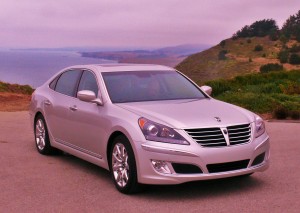
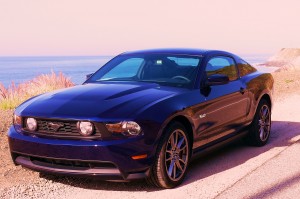
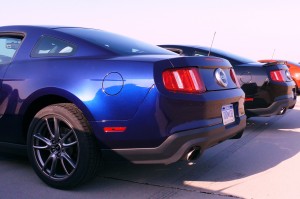


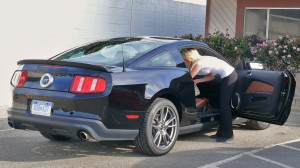

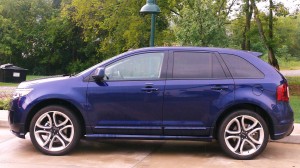
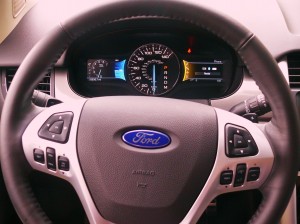
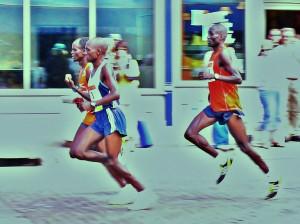
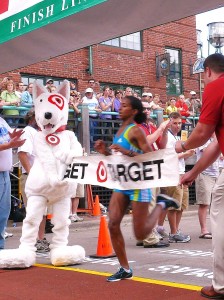
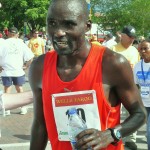
 John Gilbert is a lifetime Minnesotan and career journalist, specializing in cars and sports during and since spending 30 years at the Minneapolis Tribune, now the Star Tribune. More recently, he has continued translating the high-tech world of autos and sharing his passionate insights as a freelance writer/photographer/broadcaster. A member of the prestigious North American Car and Truck of the Year jury since 1993. John can be heard Monday-Friday from 9-11am on 610 KDAL(www.kdal610.com) on the "John Gilbert Show," and writes a column in the Duluth Reader.
John Gilbert is a lifetime Minnesotan and career journalist, specializing in cars and sports during and since spending 30 years at the Minneapolis Tribune, now the Star Tribune. More recently, he has continued translating the high-tech world of autos and sharing his passionate insights as a freelance writer/photographer/broadcaster. A member of the prestigious North American Car and Truck of the Year jury since 1993. John can be heard Monday-Friday from 9-11am on 610 KDAL(www.kdal610.com) on the "John Gilbert Show," and writes a column in the Duluth Reader.